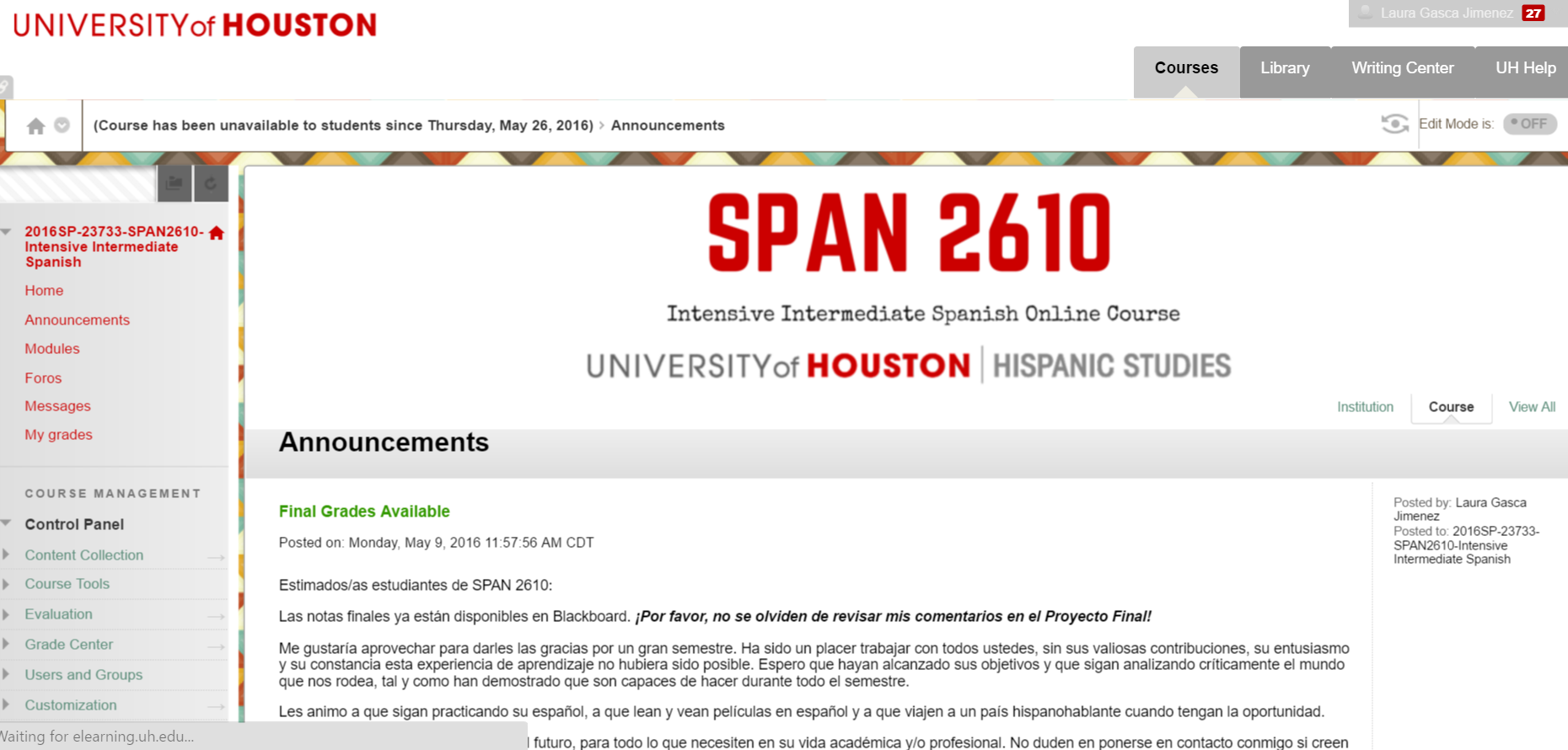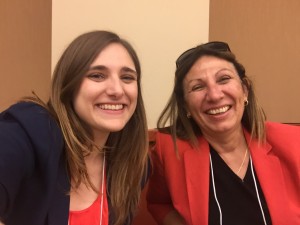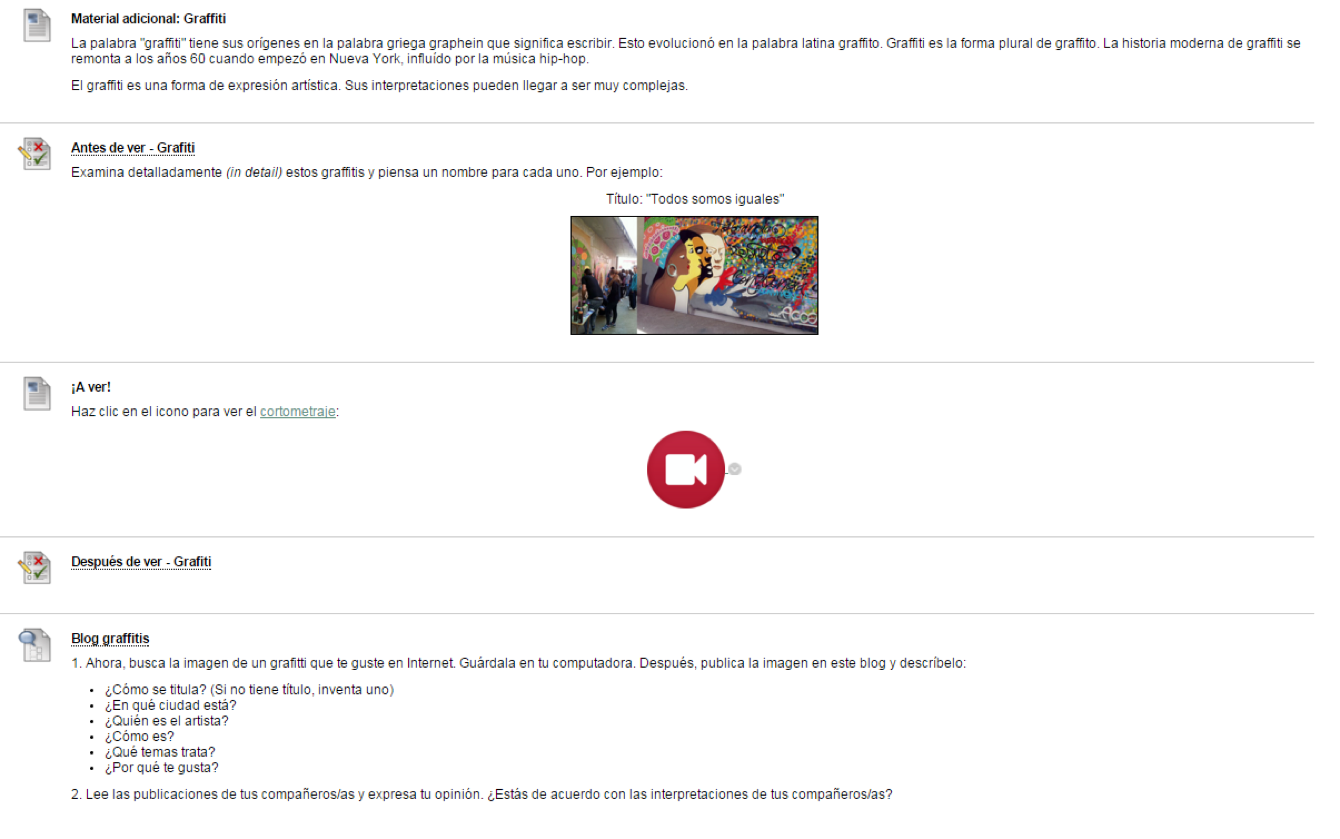This is the first installment of a monthly series showcasing innovative teaching practices in the Department of Hispanic Studies and the Department of Modern and Classical Languages.

Entry page for SPAN 2610: Intensive Intermediate Spanish Online
This month we’re profiling Dr. Alejandra Balestra, Director of the Spanish Language Program, and Laura Gasca, graduate student in the Department of Hispanic Studies, and their course design for SPAN 2610, an online course for intermediate learners of Spanish as a second language. Two other Hispanic Studies graduate students, Allison Yakel and Annette Zapata, contributed to the first iteration of the course, created in 2015.
About the Course
Because students enrolled in the course may not have had much exposure to the Spanish language and Hispanic cultures, Dr. Balestra and Ms. Gasca integrated a sociocultural and critical component to the course to encourage students to develop their language skills through engagement with cultural issues. They accomplished this by asking students to use Spanish creatively to critically analyze images, videos, quotes, and works of art. The instructors created these activities within Blackboard to compensate for the lack of authentic, up-to-date material and critical thinking activities in textbooks for intermediate Spanish learners.
Sample Activities
The activities they developed were based on authentic materials—that is, Spanish-language content created for speakers of the language rather than learners—that covered a variety of social and cultural themes, encouraged research, promoted creative language use, and encouraged reflection (both individually and in groups). For example, in one activity based around Hiyab, a short film from about a Muslim girl in Spain, students are asked to respond in writing to open-ended test questions about tolerance and their own experiences with discrimination in secondary school. Then, they watch the film, which is followed by questions requiring students to demonstrate their comprehension, critically analyze the film, and provide their own opinions on socioculturally significant issues. For example, “Do you think it is true what the teacher says to Fatima about all students being considered equal?” and “What is the director’s objective?”
Another activity asks students to examine photos of graffiti and come up with a title for each one, followed by the viewing of a short film and an internet research project (using the blog tool in Blackboard) in which they find an image of graffiti to describe and analyze.
One activity is built around a song about the State Terror in Argentina in 70s and early 80s—not only did students have to use their language skills to interpret the meaning of the song, but they also, in many cases, learned about this part of history for the first time.
Learning Outcomes
According to Dr. Balestra and Ms. Gasca, students responded positively to these activities and produced compelling responses that displayed their engagement with the material. This success has led them to incorporate more cultural and critical materials in their beginning Spanish courses.
Have you developed an innovative course or lesson plan for your language class? Do you have a colleague doing something creative that the world should know about? Email Edie Furniss to be profiled in a future installment!
Featured image by duncan c.






